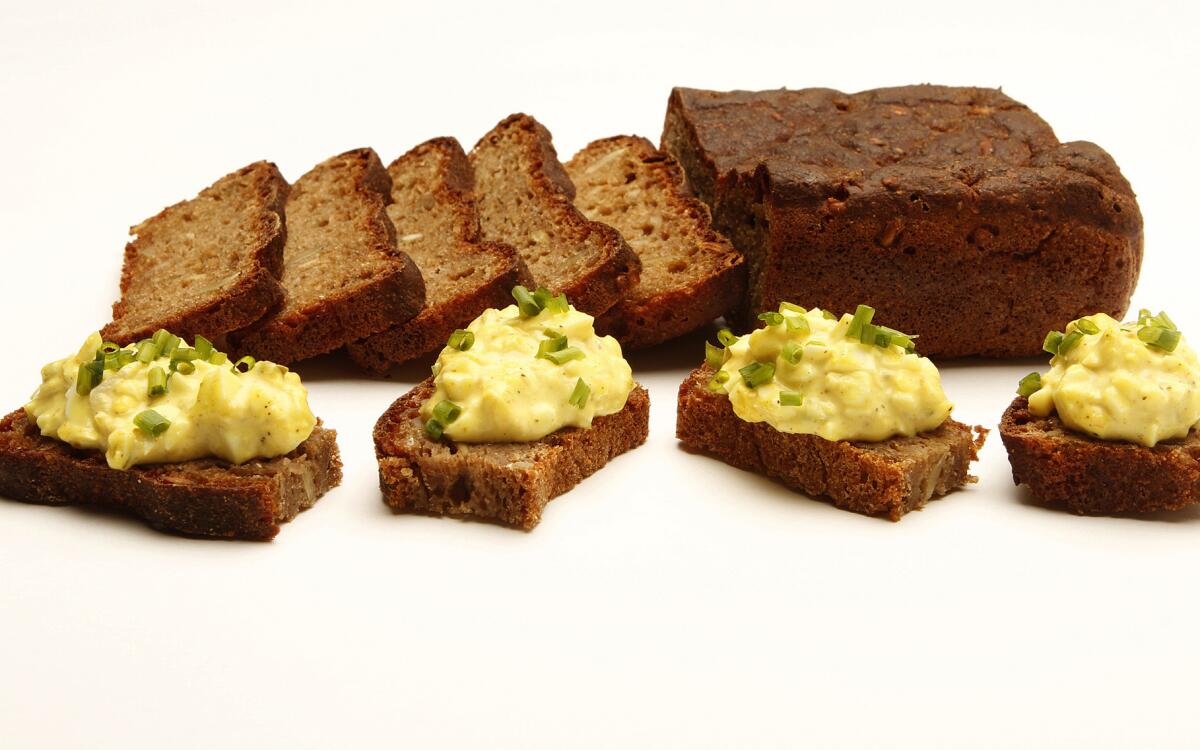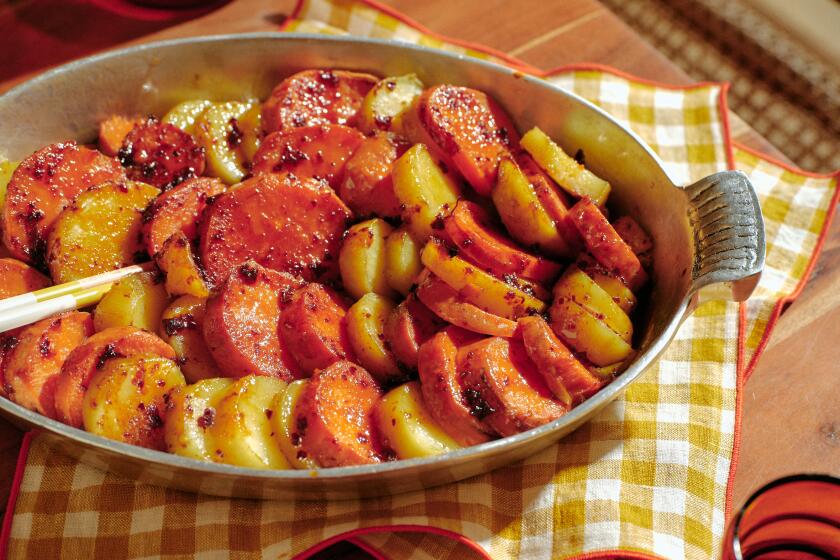Danish rye bread

Serve this dark and powerful Danish rye bread with a smooth egg salad. Because the bread is made primarily with rye flour, it needs extended and repeated risings to develop its texture and flavor. Seen in most Danish lunch boxes every day of the week, it’s a must for Easter Sunday.
From the story: Foods at the heart of Easter celebrations in Scandinavia
In a large bowl, pour the boiling water over the mixed seeds. Set aside for 15 minutes to soften the seeds.
To the bowl, add the molasses, salt, buttermilk, beer and yeast. Stir to combine. Stir in the rye flour completely to form a smooth, runny dough. Cover the bowl with a towel or plastic wrap and set aside until puffed, bubbly and doubled in volume, about 1 hour depending on the temperature of the kitchen.
Slowly stir in the all-purpose and whole-wheat flour, and continue stirring until thoroughly combined to form a loose dough. Cover the bowl loosely with plastic wrap and place in the refrigerator to rise overnight.
Remove the dough and divide it evenly between 2 buttered 9-by-5-inch baking pans. The dough will still be very soft and will need to be spooned into the pans. Gently smooth the top of the dough. (It will be very sticky, do this the best you can.)
Loosely cover the pans with a towel or plastic wrap, and set aside in a warm place until doubled, about 2 to 3 hours depending on the temperature of the kitchen).
Heat the oven to 400 degrees. When the dough is doubled, prick the dough: Dip a chopstick or skewer into water and prick holes across the surface of the dough, about 1 inch apart, making sure to prick all the way through the dough. Pour the melted butter evenly over the dough.
Bake the bread until the top is a rich, dark brown and a thermometer inserted reads 205 degrees, about 1 hour, 20 minutes. Check the bread at half-hour intervals; if it colors too deeply and you worry about it burning, reduce the temperature to 350 degrees.
Remove the loaves to a cooling rack. Gently invert the pans and remove the loaves from the pans. Wrap each loaf in a towel and cool on the rack overnight. The loaves should cool for at least 1 day before slicing. Store the loaves in a plastic bag, and slice thinly to serve.
Get our Cooking newsletter.
Your roundup of inspiring recipes and kitchen tricks.
You may occasionally receive promotional content from the Los Angeles Times.















